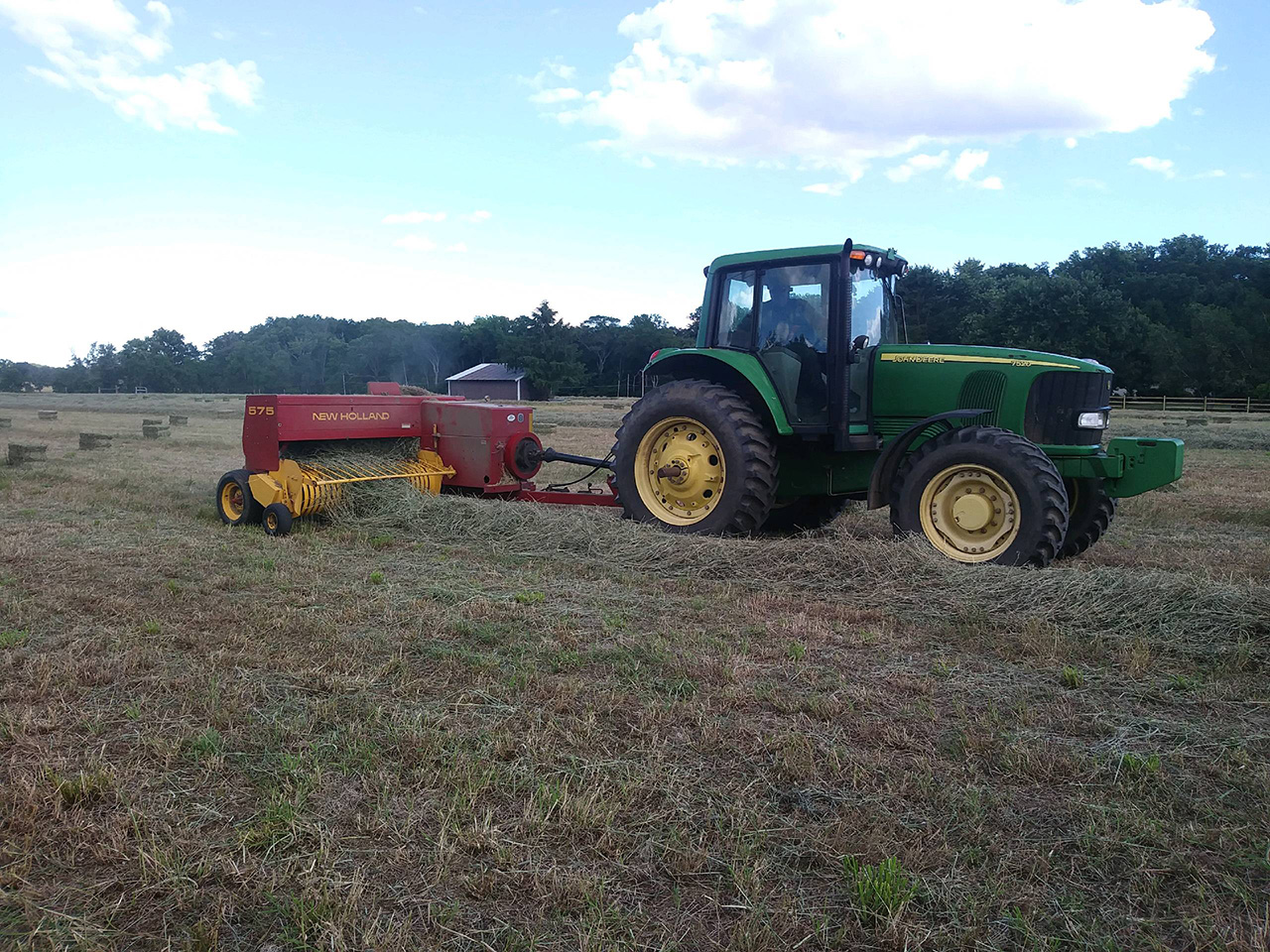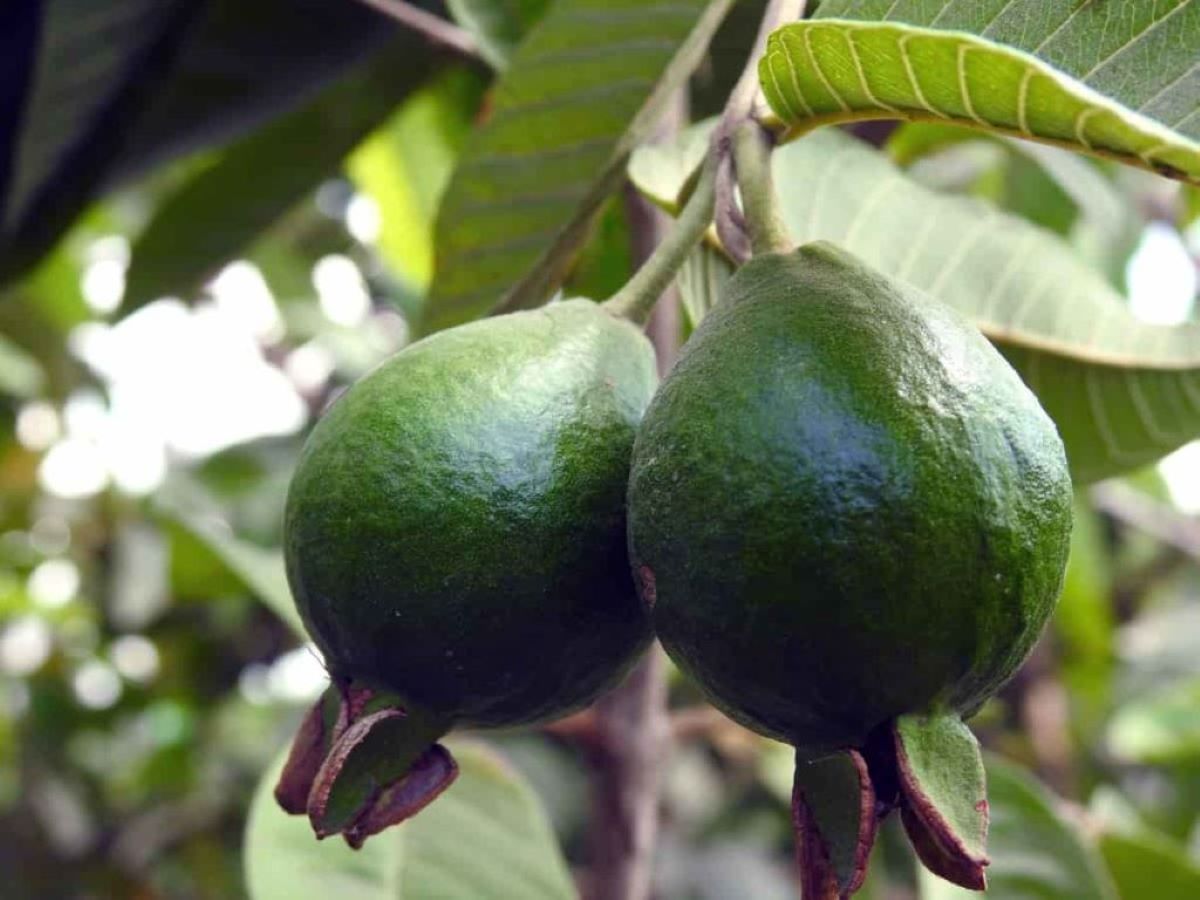Home>Gardening Tips and Tricks>What Is The Best Fertilizer For Hay Fields


Gardening Tips and Tricks
What Is The Best Fertilizer For Hay Fields
Modified: January 22, 2024
Find out the best fertilizer for hay fields and maximize yield with our expert tips and recommendations.
(Many of the links in this article redirect to a specific reviewed product. Your purchase of these products through affiliate links helps to generate commission for Chicagolandgardening.com, at no extra cost. Learn more)
Table of Contents
- Introduction
- Factors to Consider When Choosing Fertilizer for Hay Fields
- Nitrogen-Based Fertilizers for Hay Fields
- Phosphorus-Based Fertilizers for Hay Fields
- Potassium-Based Fertilizers for Hay Fields
- Secondary and Micronutrient Fertilizers for Hay Fields
- Organic Fertilizers for Hay Fields
- Best Fertilizer Recommendations for Different Hay Field Conditions
- Conclusion
Introduction
When it comes to maximizing yield in hay fields, choosing the right fertilizer is crucial. Fertilizers provide essential nutrients that help promote growth, increase productivity, and improve the quality of hay crops. However, with the myriad of options available, it can be overwhelming to determine which fertilizer is best suited for your hay fields.
In this article, we will explore the various factors to consider when choosing a fertilizer for your hay fields. We will discuss the different types of fertilizers available, including nitrogen-based, phosphorus-based, potassium-based, secondary and micronutrient fertilizers, as well as organic options. Additionally, we will provide recommendations based on different hay field conditions to help you make an informed decision.
Before we dive into the specifics, it’s important to understand that different types of hay crops have different nutrient requirements. Factors such as soil type, pH level, climate, and previous crop history also play a significant role in determining the appropriate fertilizer for your hay fields. Therefore, it’s essential to conduct a soil test to assess the specific nutrient deficiencies and customize your fertilizer program accordingly.
Now, let’s explore the factors to consider when choosing a fertilizer for hay fields to ensure maximum yield and quality.
Factors to Consider When Choosing Fertilizer for Hay Fields
Choosing the right fertilizer for your hay fields requires careful consideration of several factors. Understanding these factors will help you make an informed decision and optimize the yield and quality of your hay crops. Here are the key factors to consider:
- Soil Nutrient Analysis: Conduct a soil test to determine the nutrient levels and deficiencies in your soil. This analysis will provide valuable information about the pH level, organic matter content, and existing nutrient levels, allowing you to identify the specific nutrients your hay fields need.
- Type of Hay Crop: Different hay crops have varying nutrient requirements. For example, legumes such as alfalfa and clover require higher levels of phosphorus and potassium, while grasses generally need more nitrogen. Understanding the nutrient needs of your specific hay crop will help you select a fertilizer with the appropriate nutrient ratios.
- Nutrient Ratios: The three primary nutrients needed for healthy plant growth are nitrogen (N), phosphorus (P), and potassium (K). These are often referred to as the NPK ratio. The ideal nutrient ratio depends on the specific needs of your hay crop and can be adjusted based on soil test results. For instance, a balanced fertilizer with an NPK ratio of 10-10-10 is suitable for most hay crops.
- Solubility and Release Rate: Consider the solubility and release rate of the fertilizer. Some fertilizers release nutrients slowly over time, providing a steady supply to the plants, while others are more readily available for immediate uptake. The release rate should be aligned with the growth cycle of your hay crop for optimal nutrient absorption.
- Environmental Impact: Choose a fertilizer that minimizes the negative impact on the environment. Look for fertilizers that are formulated with slow-release nutrients, as they reduce the risk of nutrient runoff into water sources. Additionally, consider organic or natural fertilizers as an eco-friendly alternative.
Considering these factors will help you select a fertilizer that meets the specific needs of your hay fields, promotes healthy growth, and minimizes environmental impact.
Nitrogen-Based Fertilizers for Hay Fields
Nitrogen is a vital nutrient for promoting healthy foliage growth and increasing hay field productivity. Nitrogen-based fertilizers are commonly used to provide this essential nutrient to hay crops. Here are some key points to consider when using nitrogen-based fertilizers:
- Types of Nitrogen-Based Fertilizers: There are various types of nitrogen-based fertilizers available, including urea, ammonium nitrate, and ammonium sulfate. Urea is the most commonly used nitrogen fertilizer due to its high nitrogen content and cost-effectiveness.
- Application Timing: Nitrogen is a mobile nutrient and can be easily lost through leaching or volatilization. It is crucial to apply nitrogen-based fertilizers at the right time to ensure optimal absorption by plants. For hay fields, it is generally recommended to split the nitrogen application into multiple doses throughout the growing season to provide a continuous supply of nutrients.
- Nitrogen Fertilizer Rates: The nitrogen requirements of hay crops vary depending on factors such as the type of hay crop and yield goals. Soil tests can provide insights into the existing nitrogen levels in the soil and help determine the appropriate fertilizer rate. It is important not to overapply nitrogen, as excessive levels can lead to environmental pollution and reduced forage quality.
- Slow-Release Nitrogen: Consider using slow-release nitrogen fertilizers, such as polymer-coated or controlled-release fertilizers. These types of fertilizers allow for gradual nutrient release over an extended period, providing a sustained supply of nitrogen to the hay crops.
- Consider Environmental Factors: When using nitrogen-based fertilizers, environmental factors such as rainfall and temperature should be taken into account. Heavy rain events can increase the risk of nitrogen runoff, while high temperatures can lead to volatilization loss. Adjusting the application timing and using appropriate nitrogen sources can help mitigate these risks.
Nitrogen-based fertilizers are an effective way to supply the necessary nutrient for healthy growth and improved productivity in hay fields. By understanding the different types of nitrogen-based fertilizers and considering factors such as application timing, rates, slow-release options, and environmental factors, you can optimize the use of nitrogen and maximize the yield of your hay crops.
Phosphorus-Based Fertilizers for Hay Fields
Phosphorus is an essential nutrient for promoting strong root development, flowering, and seed production in hay crops. Phosphorus-based fertilizers are commonly used to provide this crucial nutrient to hay fields. Here are some important considerations when using phosphorus-based fertilizers:
- Types of Phosphorus-Based Fertilizers: There are several types of phosphorus-based fertilizers available, including triple superphosphate, diammonium phosphate (DAP), and monoammonium phosphate (MAP). These fertilizers vary in their phosphorus content and solubility.
- Soil pH and Phosphorus Availability: The availability of phosphorus in the soil is influenced by pH. Acidic soils can bind phosphorus, making it less available to plants. Conduct a soil test to determine the pH level and adjust the pH if necessary to optimize phosphorus availability.
- Phosphorus Fertilizer Placement: Phosphorus fertilizers can be applied in various ways, including broadcast application or band placement. Band placement of phosphorus fertilizer near the root zone of the plants can improve nutrient uptake. However, it’s essential to be cautious with band placement to prevent seedling damage.
- Phosphorus Fertilizer Rates: The phosphorus requirements of hay crops can vary based on factors such as soil test results, hay crop variety, and yield goals. Soil tests can provide insights into the existing phosphorus levels and guide the application rate of phosphorus-based fertilizers. It is important to avoid excessive phosphorus application, as it can negatively impact the environment and water quality.
- Phosphorus and Timing: Phosphorus is relatively immobile in the soil and does not leach easily. Therefore, it is generally recommended to apply phosphorus-based fertilizers during or before planting. This allows the roots to come into direct contact with the fertilizer and maximize phosphorus uptake.
Phosphorus-based fertilizers play a vital role in supplying the necessary phosphorus for optimal growth and development in hay crops. By understanding the different types of fertilizers, considering soil pH and availability, determining appropriate fertilizer placement and rates, and applying phosphorus at the right time, you can effectively utilize phosphorus-based fertilizers to maximize the yield and quality of your hay fields.
Potassium-Based Fertilizers for Hay Fields
Potassium is a crucial nutrient for hay crops as it plays a significant role in several physiological processes, including water and nutrient uptake, disease resistance, and overall plant vigor. Potassium-based fertilizers are commonly used to supply this essential nutrient to hay fields. Here are some important considerations when using potassium-based fertilizers:
- Types of Potassium-Based Fertilizers: Potassium-based fertilizers come in different forms, including potassium chloride (Muriate of Potash), potassium sulfate, and potassium nitrate. These fertilizers differ in their potassium content and other nutrient components.
- Potassium Requirements: The potassium requirements of hay crops can vary depending on factors such as crop type, yield goals, and soil test results. Conducting a soil test will provide valuable insights into the existing potassium levels, allowing you to determine the appropriate fertilizer rate.
- Potassium and pH Balance: Potassium availability can be affected by soil pH. Alkaline soils tend to have reduced potassium availability, while acidic soils can lead to potassium leaching. Adjusting the pH level can help optimize potassium availability in the soil.
- Application Timing: Potassium can be applied before or during planting as a basal application, or as a top-dressing application during the growing season. It is generally recommended to split the potassium application into multiple doses to ensure a continuous supply throughout the hay crop’s growth cycle.
- Potassium and Crop Quality: Adequate potassium levels in hay crops can improve overall forage quality. Potassium is involved in protein synthesis and carbohydrate metabolism, which can enhance the nutritional value of the hay and contribute to better animal nutrition.
- Consider Environmental Factors: When using potassium-based fertilizers, consider environmental factors such as soil erosion and water runoff. Applying potassium fertilizers in excessive amounts can contribute to water pollution. It is crucial to follow recommended application rates and use best management practices to minimize environmental impact.
Choosing the right potassium-based fertilizer and considering factors such as potassium requirements, pH balance, application timing, crop quality, and environmental impact can help maximize the effectiveness of potassium fertilization in hay fields. Providing adequate potassium to your hay crops will not only enhance their growth and vigor but also contribute to producing high-quality forage for livestock feed.
Secondary and Micronutrient Fertilizers for Hay Fields
In addition to primary nutrients like nitrogen, phosphorus, and potassium, hay crops also require secondary nutrients and micronutrients for optimal growth and productivity. Secondary nutrients include calcium (Ca), magnesium (Mg), and sulfur (S), while micronutrients include iron (Fe), manganese (Mn), zinc (Zn), copper (Cu), boron (B), and molybdenum (Mo). Here are some important considerations when using secondary and micronutrient fertilizers:
- Soil Testing: Conduct a thorough soil analysis to determine the levels of secondary nutrients and micronutrients in your soil. This will help identify any deficiencies and guide the application of specific fertilizers.
- Types of Fertilizers: Secondary and micronutrient fertilizers come in various forms, including granular, liquid, or foliar applications. The choice of fertilizer type depends on the nutrient deficiency, soil conditions, and ease of application.
- Application Timing: Secondary and micronutrient fertilizers can be applied as a basal application before planting or as a top-dressing during the growing season. Proper timing is crucial to ensure that the nutrients are available when the plants need them the most.
- Fertilizer Rates: The application rates of secondary and micronutrient fertilizers depend on the nutrient levels indicated by soil test results. It is important to follow recommended rates to avoid over- or under-application, which can affect crop growth and quality.
- Foliar Application: In cases of severe nutrient deficiencies, foliar application of secondary and micronutrient fertilizers can provide a quick and targeted solution. Foliar application allows nutrients to be directly absorbed by the leaves, bypassing any soil restrictions or imbalances.
- Combination Fertilizers: Some fertilizers are formulated to provide a combination of secondary nutrients and micronutrients. This can be beneficial for hay crops that require multiple nutrient supplements. These combination fertilizers simplify the application process and ensure a balanced nutrient supply.
Applying secondary and micronutrient fertilizers to hay fields can help address specific nutrient deficiencies and promote optimal crop growth and development. By conducting soil tests, selecting the appropriate fertilizer type, timing the application correctly, following recommended rates, and considering options for foliar application or combination fertilizers, you can ensure that your hay crop receives the necessary secondary nutrients and micronutrients to thrive.
Organic Fertilizers for Hay Fields
For hay field owners who prefer a natural and environmentally friendly approach, organic fertilizers can be an excellent choice. Organic fertilizers are derived from natural sources such as animal manure, compost, and plant-based materials. Here are some important considerations when using organic fertilizers in hay fields:
- Nutrient Content: Organic fertilizers typically have a lower nutrient content compared to synthetic fertilizers. However, they provide a slow-release of nutrients that can benefit hay crops over an extended period. Understanding the nutrient content of organic fertilizers is important for proper application.
- Soil Health: Organic fertilizers improve soil health by enhancing its structure, increasing its water-holding capacity, and promoting the growth of beneficial soil organisms. Regular use of organic fertilizers can lead to improved soil fertility and nutrient cycling, creating a sustainable environment for hay crops to thrive.
- Application Timing: Organic fertilizers release nutrients slowly, so they should be applied well in advance of the hay crop’s nutrient demand. It is recommended to apply organic fertilizers during soil preparation or before the planting season to ensure adequate nutrient availability for optimal growth.
- Source and Quality: The quality of organic fertilizers can vary depending on their source. It is important to choose organic fertilizers from reputable suppliers to ensure they are free from contaminants and properly decomposed. This will ensure that the nutrients are available to the plants and reduce the risk of weed seeds or pathogens.
- Composting: Composting can be an effective way to transform organic waste materials into nutrient-rich fertilizers. By composting materials such as animal manure, crop residues, or kitchen waste, you can create a valuable source of organic fertilizer that enriches the soil and supports the growth of healthy hay crops.
- Integration with Synthetic Fertilizers: It is possible to integrate organic and synthetic fertilizers in a hay field fertilization program. This approach combines the slow-release benefits of organic fertilizers with the immediate availability of nutrients from synthetic fertilizers. Soil testing can help determine the optimal ratio of organic to synthetic fertilizers for your specific hay field.
Organic fertilizers offer a natural and sustainable option for nourishing hay crops. By considering factors such as nutrient content, soil health, application timing, source and quality, composting, and integration with synthetic fertilizers, you can harness the benefits of organic fertilizers and promote the long-term productivity and health of your hay fields in an eco-friendly manner.
Best Fertilizer Recommendations for Different Hay Field Conditions
Choosing the best fertilizer for your hay fields depends on various factors, including soil conditions, hay crop type, and specific growing conditions. Here are some fertilizer recommendations for different hay field conditions:
- Sandy or Low-Fertility Soils: Sandy or low-fertility soils often have poor water-holding capacity and low nutrient availability. It is recommended to use fertilizers with higher nutrient concentrations, such as ammonium nitrate or urea. These fertilizers can provide a quick-release of nitrogen and help improve the growth and productivity of hay crops in these challenging soil conditions.
- Soils with High Phosphorus or Potassium Levels: Soils with high levels of phosphorus or potassium may not require additional supplementation. Conduct a soil test to determine if the existing nutrient levels are sufficient for the hay crop’s needs. If phosphorus or potassium levels are already high, it may be more beneficial to focus on other nutrients or adjust the nutrient ratios for balanced fertilization.
- Legume Hay Crops: Legume hay crops, such as alfalfa and clover, have higher nitrogen requirements compared to grasses. Consider using nitrogen-based fertilizers with slow-release characteristics, such as polymer-coated urea, to provide a sustained supply of nitrogen throughout the growing season. Additionally, consider including phosphorus and potassium fertilizers to meet the nutrient demands of these high-yielding legume crops.
- Grass Hay Crops: Grass hay crops generally benefit from nitrogen-rich fertilizers to promote vigorous foliage growth. Nitrogen-based fertilizers, such as ammonium nitrate or urea, are commonly used to supply the necessary nitrogen for grasses. However, it is important to consider the balance of other nutrients, such as phosphorus and potassium, to ensure overall nutrient sufficiency for optimal grass hay production.
- Newly Established Hay Fields: Newly established hay fields require special attention to promote strong root development and establishment. It is recommended to use fertilizers with a higher phosphorus content, such as diammonium phosphate (DAP) or triple superphosphate, during the establishment phase. This will support root growth and help establish a healthy stand of hay crops.
- Organic Hay Production: For those following organic practices, organic fertilizers such as compost, animal manure, or bone meal can be excellent choices. These natural sources provide a slow-release of nutrients and contribute to soil health and fertility. Consider composting organic materials or using well-decomposed animal manure to ensure nutrient availability and minimize the risk of weed seeds or pathogens.
It is important to note that these recommendations are general guidelines and may need to be adjusted based on soil test results, hay crop variety, and specific hay field conditions. Conducting regular soil tests and consulting with local agricultural experts will provide valuable insights to tailor fertilizer recommendations to the specific needs of your hay fields.
Conclusion
Choosing the right fertilizer is essential for maximizing yield and maintaining the health and quality of hay fields. By considering factors such as soil nutrient analysis, hay crop type, nutrient ratios, solubility and release rate, and environmental impact, you can make informed decisions when selecting fertilizers for your hay fields.
Nitrogen-based fertilizers are important for promoting foliage growth and increasing productivity. Phosphorus-based fertilizers play a crucial role in root development and flowering, while potassium-based fertilizers enhance nutrient uptake and overall plant vigor. Additionally, incorporating secondary and micronutrient fertilizers can address specific nutrient deficiencies, while organic fertilizers offer a natural and sustainable alternative for hay field owners.
It is important to adjust fertilizer recommendations based on different hay field conditions. Sandy or low-fertility soils may require higher nutrient concentrations, while soils with high phosphorus or potassium levels may not need additional supplementation. Legume and grass hay crops have varying nutrient requirements, and newly established hay fields need special attention for root development. For those following organic practices, organic fertilizers can provide slow-release nutrients and contribute to soil health.
Remember to conduct regular soil tests to determine specific nutrient deficiencies and tailor fertilization programs accordingly. Consult with local agricultural experts to ensure the best fertilizer recommendations for your hay fields.
By selecting the appropriate fertilizers and implementing sound fertilization practices, you can optimize the yield, quality, and sustainability of your hay fields, providing ample forage for livestock and contributing to the success of your agricultural endeavors.










